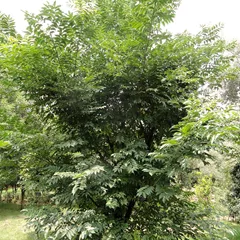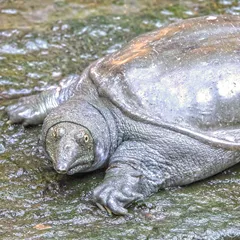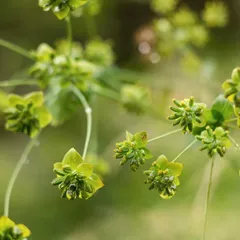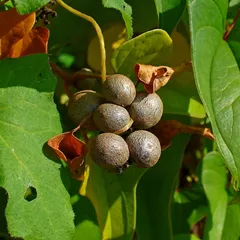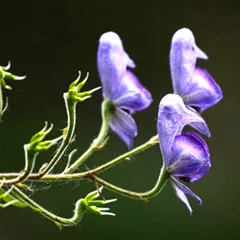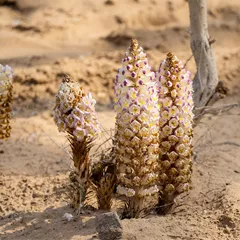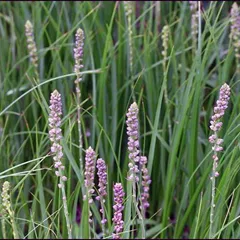Er Xian Tang
Er Xian Tang
Chinese: 二仙汤
Pinyin: Èr Xiān Tāng
Other names: Two-Immortal Decoction, Circuligo and Epimedium Combination
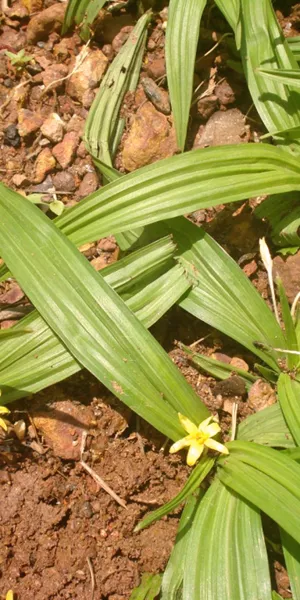
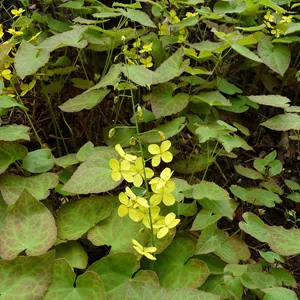
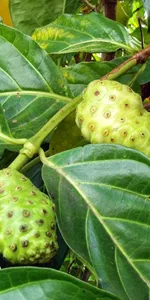
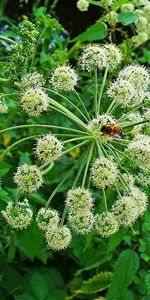
Er Xian Tang
Er Xian Tang
Chinese: 二仙汤
Pinyin: Èr Xiān Tāng
Other names: Two-Immortal Decoction, Circuligo and Epimedium Combination
Number of ingredients: 6 herbs
Formula category: Formulas that tonify Yin and Yang
Conditions for which it may be prescribed: HyperthyroidPolycystic kidneysMenopausal syndrome and seven other conditions
- Nourishes Yin and tonifies Yang of the Kidneys
- Clears Empty Heat
- Regulates the Directing and Penetrating Vessels
Source date: 1950 AD
Source book: Clinical Handbook of Chinese Medical Formulas
The information provided here is not a replacement for a doctor. You shouldn't use it for the purpose of self-diagnosing or self-medicating but rather so you can have a more informed discussion with a professional TCM practitioner.
Er Xian Tang is a 6-ingredient Chinese Medicine formula with Curculigo Rhizomes (Xian Mao) and Epimedium Herbs (Yin Yang Huo) as principal ingredients.
Invented in 1950 AD, it belongs to the category of formulas that tonify Yin and Yang. Its main actions are: 1) nourishes Yin and tonifies Yang of the Kidneys and 2) clears Empty Heat.
In Chinese Medicine health conditions are thought to arise due to "disharmonies" in the body as a system. These disharmonies are called "patterns" and the very purpose of herbal formulas is to fight them in order to restore the body's harmony.
In this case Er Xian Tang is used by TCM practitioners to fight patterns like Kidney Yang Deficiency or Deficiency of both the Kidney Yin and Yang. From a Western Medicine standpoint, such patterns can give rise to a range of conditions such as irregular menstruation, menopausal syndrome or perimenopausal syndrome for instance.
On this page, after a detailed description of each of the six ingredients in Er Xian Tang, we review the patterns and conditions that Er Xian Tang helps treat.
The six ingredients in Er Xian Tang
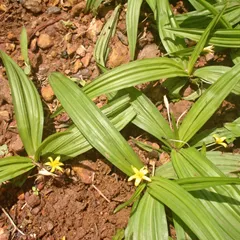
Xian Mao is a king ingredient in Er Xian Tang. Like the name indicates, it means it has more power than other ingredients in the formula.
1. Curculigo Rhizomes (Xian Mao)
Part used: Dried rhizome
Nature: Hot
Taste(s): Pungent
Meridian affinity: SpleenKidneyLiver
Category: Tonic herbs for Yang Deficiency
Xian Mao works together with Epimedium herb (Yin Yang Huo), the other key herb in this formula, and with Morinda root (Ba Ji Tian), a deputy herb here, to warm the Kidney Yang and tonify the Kidney Essence.
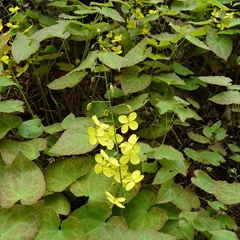
Yin Yang Huo is a king ingredient in Er Xian Tang. Like the name indicates, it means it has more power than other ingredients in the formula.
2. Epimedium Herbs (Yin Yang Huo)
Part used: Dried aerial part
Nature: Warm
Meridian affinity: KidneyLiver
Category: Tonic herbs for Yang Deficiency
In general Yin Yang Huo's main actions are as follows: "Tonifies the Kidney Yang. Expels Wind-Damp-Cold Bi Pain. Strengthens Lung Qi and assists in expectoration."
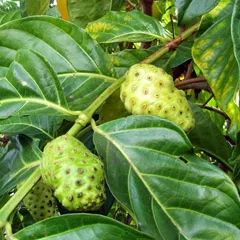
Ba Ji Tian is a deputy ingredient in Er Xian Tang. This means it helps the king ingredient(s) treat the main pattern or it serves to treat a coexisting pattern.
3. Morinda Roots (Ba Ji Tian)
Part used: Dried root
Nature: Warm
Meridian affinity: KidneyLiver
Category: Tonic herbs for Yang Deficiency
In general Ba Ji Tian's main actions are as follows: "Tonifies the Kidney Yang. Expels Wind-Damp-Cold painful obstruction (Bi Pain)."
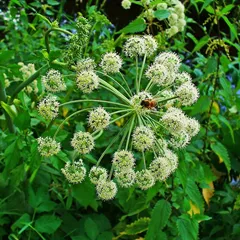
Dang Gui is an assistant ingredient in Er Xian Tang. This means that it either serves to reinforces the effect of other ingredients or it moderates their toxicity.
4. Dong Quai (Dang Gui)
Part used: Dried root
Nature: Warm
Meridian affinity: HeartLiverSpleen
Category: Tonic herbs for Blood Deficiency
In general Dang Gui's main actions are as follows: "Tonifies the Blood. Lubricates the Intestines. Relieve constipation. Promotes circulation and dispels Bi Pain. Reduce Dysmenorrhea and help with irregular menstruation."
In the context of Er Xian Tang, it is used because it moistens and nourishes the Blood and regulates the Penetrating and Governing Vessels.
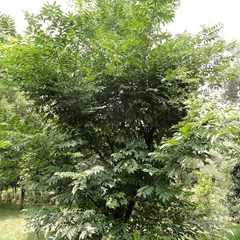
Huang Bo is an assistant ingredient in Er Xian Tang. This means that it either serves to reinforces the effect of other ingredients or it moderates their toxicity.
5. Phellodendron Bark (Huang Bo)
Part used: Dried bark
Nature: Cold
Taste(s): Bitter
Meridian affinity: BladderKidneyLarge intestine
Category: Herbs that clear Heat and dry Dampness
Huang Bo works together with Anemarrhena rhizome (Zhi Mu), another assistant in this formula, to drain ascending Fire at the gate of vitality.
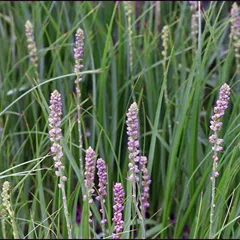
Zhi Mu is an assistant ingredient in Er Xian Tang. This means that it either serves to reinforces the effect of other ingredients or it moderates their toxicity.
6. Anemarrhena Rhizomes (Zhi Mu)
Part used: Dried rhizome
Nature: Cold
Meridian affinity: KidneyLungStomach
Category: Herbs that clear Heat and purge Fire and/or clear Summer Heat
In general Zhi Mu's main actions are as follows: "Clears Heat and Fire from the Qi level. Clears Heat and Fire from the Lung and Stomach. Clears Heat and tonifies the Yin."
Conditions and patterns for which Er Xian Tang may be prescribed
It's important to remember that herbal formulas are meant to treat patterns, not "diseases" as understood in Western Medicine. According to Chinese Medicine patterns, which are disruptions to the body as a system, are the underlying root cause for diseases and conditions.
As such Er Xian Tang is used by TCM practitioners to treat two different patterns which we describe below.
But before we delve into these patterns here is an overview of the Western conditions they're commonly associated with:
Irregular menstruation Menopausal syndrome Perimenopausal syndrome Essential hypertension Chronix glumerulonephritis Chronic pyelonephritis Polycystic kidneys Renal vascular disease Hyperthyroid Urinary tract infection
Again it wouldn't be correct to say "Er Xian Tang treats irregular menstruation" for instance. Rather, Er Xian Tang is used to treat patterns that are sometimes the root cause behind irregular menstruation.
Now let's look at the two patterns commonly treated with Er Xian Tang.

The Kidneys is a so-called "Zang" Organ. Learn more about the Kidneys in Chinese Medicine
Kidney Yang Deficiency
Pulse type(s): Deep (Chen), Slow (Chi)
Tongue coating: Thin white coating
Tongue color: Pale
Tongue shape: Swollen
Symptoms: Asthma Chills Fatigue Dysuria Tinnitus Coughing Dizziness Weak legs Lassitude Impotence Sore back Pale face Back pain Dark face Tiredness Knee pain Depression Cold limbs Leukorrhea Weak Limbs Weak knees Infertility Loose teeth Late period Hot flushes Poor memory Loose stools Constipation Incontinence Night sweats Spermatorrhea Poor appetite Oedema of legs Abdominal pain Dripping urine Scanty periods Lower back pain Feeling of cold Low sperm count Sore lower back Premature aging Decreased libido Aversion to cold Cold extremities Oedema of ankles Vaginal discharge Frequent urination Urinary difficulty Pale color periods Abdominal fullness Cold and weak knees Persistent diarrhea Nocturnal emissions Cold hands and feet Premature menopause Infertility in women Night time urination Pale menstrual blood Premature ejaculation Incontinence of urine Prostatic hypertrophy Bright-white complexion Absence of menstruation Thin and watery periods Lower abdominal pressure Pale and abudant urination Thin body lacking strength Loss of hearing or deafness Spasms of the lower abdomen Cold in the lower extremities Edema of the lower extremities Weakness and aching in the knees Exhaustion from long-term illness Weakness of the lower extremities Thin and watery vaginal discharge Nocturnal emissions without dreams Sensation of cold in the lower back Soreness and weakness in the lower back Cold sensation in the lower half of the body
Er Xian Tang is sometimes prescribed by TCM practitioners to treat Kidney Yang Deficiency. This pattern leads to symptoms such as lower back pain, dizziness, tinnitus and cold and weak knees. Patients with Kidney Yang Deficiency typically exhibit deep (Chen) or slow (Chi) pulses as well as Pale tongue.
Kidney Yang Deficiency causes Internal Cold and weakness. It indicates that the Fire of the Gate of Life, which is located between the two Kidneys and supplies fundamental warmth for the body, is also impaired. Therefore, the Organs lack warmth and cannot fully perform their... read more about Kidney Yang Deficiency

The Kidneys is a so-called "Zang" Organ. Learn more about the Kidneys in Chinese Medicine
Deficiency of both the Kidney Yin and Yang
Symptoms: Chills Fatigue Sweating Tinnitus Lassitude Back pain Dizziness Depression Dry throat Hot flushes Hypertension Irritability Palpitations Night sweats Frequent urination Menopausal symptoms Cold hands and feet Sore and weak limbs Irregular menstruation
Er Xian Tang is sometimes prescribed by TCM practitioners to treat Deficiency of both the Kidney Yin and Yang. This pattern leads to symptoms such as menopausal symptoms, hypertension, irregular menstruation and hot flushes.
Formulas similar to Er Xian Tang
Da Bu Yin Wan is 33% similar to Er Xian Tang
Qin Jiao Bie Jia San is 33% similar to Er Xian Tang
Tiao Gan Tang is 29% similar to Er Xian Tang
Zan Yu Dan is 29% similar to Er Xian Tang
Dang Gui Liu Huang Tang is 29% similar to Er Xian Tang
Zhi Bo Di Huang Wan is 25% similar to Er Xian Tang



